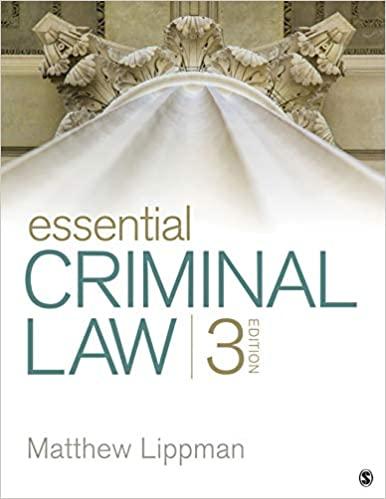Question
link to the article https://www.eeoc.gov/newsroom/rainbow-usa-inc-pay-11000-settle-eeoc-pregnancy-discrimination-lawsuit https://www.natlawreview.com/article/rainbow-usa-inc-to-pay-11000-to-settle-eeoc-pregnancy-discrimination-lawsuit The article Rainbow USA, Inc., to Pay $11,000 to Settle EEOC Pregnancy Discrimination Lawsuit Press Release 01-10-2020 Rainbow USA,
link to the article
https://www.eeoc.gov/newsroom/rainbow-usa-inc-pay-11000-settle-eeoc-pregnancy-discrimination-lawsuit
https://www.natlawreview.com/article/rainbow-usa-inc-to-pay-11000-to-settle-eeoc-pregnancy-discrimination-lawsuit
The article
Rainbow USA, Inc., to Pay $11,000 to Settle EEOC Pregnancy Discrimination Lawsuit
Press Release01-10-2020
Rainbow USA, Inc., to Pay $11,000 to Settle EEOC Pregnancy Discrimination Lawsuit
Specialty Apparel Chain Fired Manager After Learning She Was Pregnant, Agency Charged
NEW ORLEANS-Rainbow USA, Inc. (Rainbow), a specialty apparel chain doing business in the Chalmette, Louisiana area, agreed to pay $11,000 in back pay to settle a federal pregnancy discrimination lawsuit, the U.S. Equal Employment Opportunity Commission (EEOC) announced today.
According to the EEOC's lawsuit, a junior assistant manager in her first trimester of pregnancy, was indefinitely suspended and two days later was fired after the company learned of her pregnancy-related restrictions.
Such alleged conduct violates Title VII of the Civil Rights Act of 1964and the Pregnancy Discrimination Act of 1978 (PDA). The EEOC filed suit (Civil Action No. 2:18-cv-09007) in the U.S. District Court for the Eastern District of Louisiana after first attempting to reach a pre-litigation settlement through its voluntary conciliation process.
In addition to backpay, the consent decree provides non-monetary relief, including an injunction prohibiting any future discrimination. Rainbow also agreed to maintain an effective anti-discrimination policy to protect all employees from any form of discrimination and requires that Rainbow provide training on its policy and Title VII's prohibitions, particularly pregnancy discrimination. Rainbow also will report to the EEOC on its compliance with the consent decree and post a notice for the employees and/or applicants to be aware of their rights.
"No one should have to decide between having a family and having a job, " said Rudy Sustaita, regional attorney for EEOC's New Orleans and Houston offices. "The non-monetary provisions of the decree are intended to protect pregnant employees, especially those who have medical conditions related to their pregnancy."
The EEOC advances opportunity in the workplace by enforcing federal laws prohibiting employment discrimination. More information is available atwww.eeoc.govincludingspecific resourcesabout pregnancy discrimination. Stay connected with the latest EEOC news by subscribing to ouremail updates.
Questions
- Introduced the article name, author, and date published within the body of the post.
- Apply business legal theory to the case and discuss social and ethical principles related to issues in the case.
- Identify the case caption.The case caption includes the party names (who sued who) and also, the case reporter (where the case is found, the court, and the date of the decision).
- Identify the plaintiff(s) and the defendant(s).
- What was the Issue?
- Rule:What law did the court apply to resolve the issue?
- Analysis/Application: discuss the reasons the court gave to apply the law the courtused to resolve the issue. The court may discuss prior cases on the same or similar facts. You will provide a brief summary of the facts of the case. Then,explain the reasons why the court applied the rule (law) to those facts.
- Conclusion:Tell us what happened in the case.
What did the court decide?Did it reverse the decision of the trial court? Did it affirm the decision of the trial court (meaning, a decision that the trial court did not err in its decision of the case)?
What was the vote?For example, if a U.S. Supreme Court decision, was it 5-4, 7-2, etc.
Who wrote the opinion?
Was there a concurring opinion (judges who agreed with the result but not the reasoning the majority relied on in reaching the result) or was there a dissenting opinion (judges who disagreed with the majority decision)?
If so, why did these judges refuses to join the majority?Briefly discuss the judges' opinions.
9. Your opinion:What is your reaction to the opinion?
Do you agree with the decision the court reached?Why or why not?Identify the political, economic and social impact of the decision, if any.
Make sure to support your opinion with information you havelearned from your research.
10. Cite all sources or references that you use.
Step by Step Solution
There are 3 Steps involved in it
Step: 1

Get Instant Access to Expert-Tailored Solutions
See step-by-step solutions with expert insights and AI powered tools for academic success
Step: 2

Step: 3

Ace Your Homework with AI
Get the answers you need in no time with our AI-driven, step-by-step assistance
Get Started


